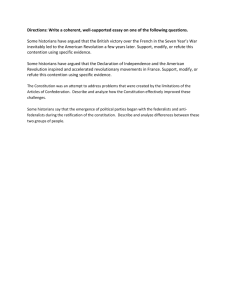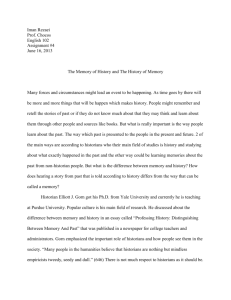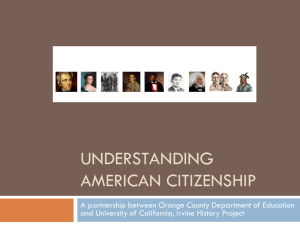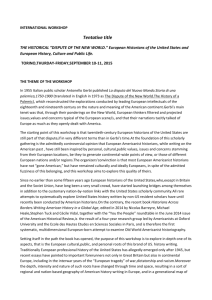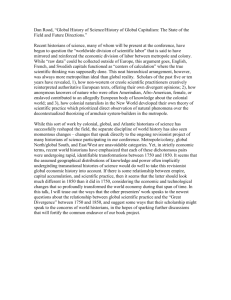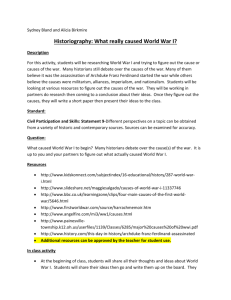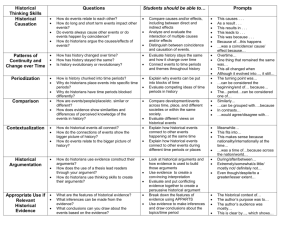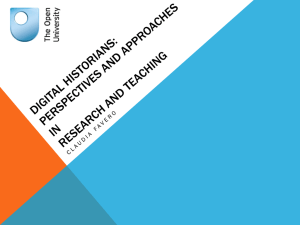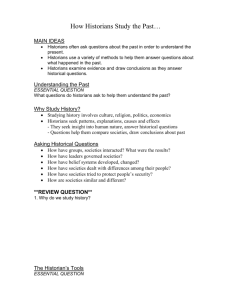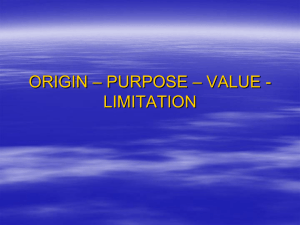evidence - SchoolNotes
advertisement
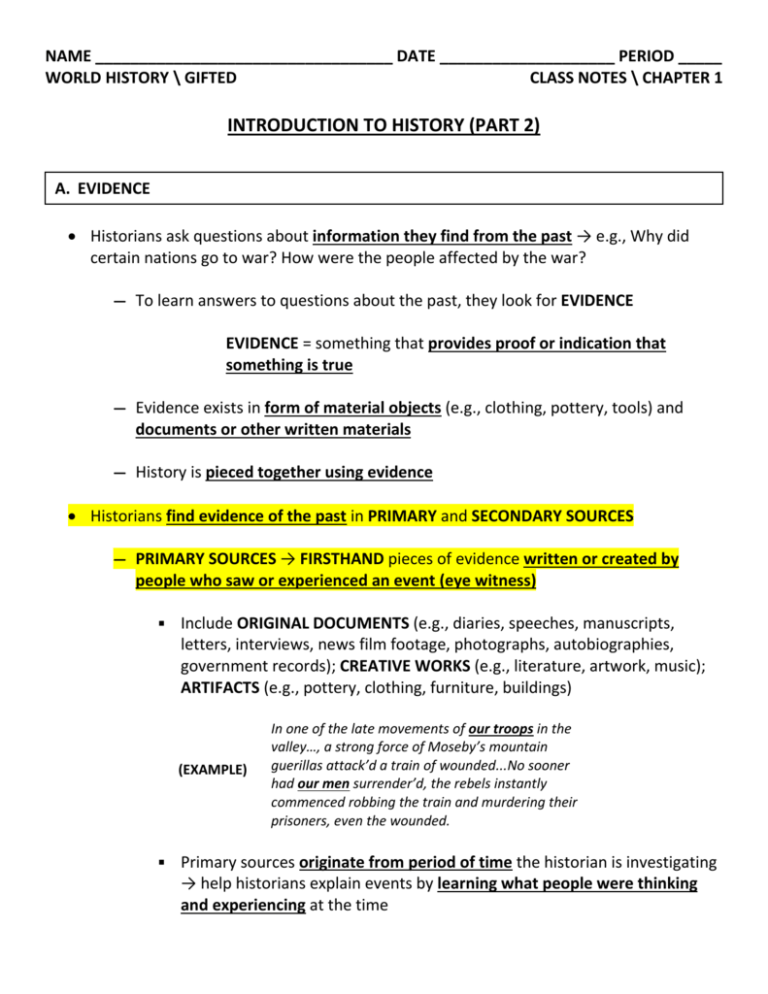
NAME __________________________________ DATE ____________________ PERIOD _____ WORLD HISTORY \ GIFTED CLASS NOTES \ CHAPTER 1 INTRODUCTION TO HISTORY (PART 2) A. EVIDENCE Historians ask questions about information they find from the past → e.g., Why did certain nations go to war? How were the people affected by the war? — To learn answers to questions about the past, they look for EVIDENCE EVIDENCE = something that provides proof or indication that something is true — Evidence exists in form of material objects (e.g., clothing, pottery, tools) and documents or other written materials — History is pieced together using evidence Historians find evidence of the past in PRIMARY and SECONDARY SOURCES — PRIMARY SOURCES → FIRSTHAND pieces of evidence written or created by people who saw or experienced an event (eye witness) Include ORIGINAL DOCUMENTS (e.g., diaries, speeches, manuscripts, letters, interviews, news film footage, photographs, autobiographies, government records); CREATIVE WORKS (e.g., literature, artwork, music); ARTIFACTS (e.g., pottery, clothing, furniture, buildings) (EXAMPLE) In one of the late movements of our troops in the valley…, a strong force of Moseby’s mountain guerillas attack’d a train of wounded...No sooner had our men surrender’d, the rebels instantly commenced robbing the train and murdering their prisoners, even the wounded. Primary sources originate from period of time the historian is investigating → help historians explain events by learning what people were thinking and experiencing at the time Historians analyze and interpret information from primary sources → e.g., Where and when was the source created? Why was it created? For whom was it intended? — SECONDARY SOURCES → works that interpret and analyze primary sources; created AFTER historical event by people who were NOT part of event (e.g., biographies, encyclopedias, history books, textbooks) (EXAMPLE) The Civil War was a conflict between the United States government and a group of states that had seceded (withdrawn) from the union. The war took more American lives than any other war in history. Secondary sources contain background information and are often based on primary sources B. POINT OF VIEW Historians interpret primary sources and reasons they were created → they then attempt to determine whether sources are trustworthy and reliable — Primary sources are each created with a particular POINT OF VIEW → individual responsible for source used point of view to decide what information to document → can affect RELIABILITY of source POINT OF VIEW = personal attitude about people or life — Point of view is evident in secondary sources as well → after interpreting evidence presented in primary sources, historians put together what they believe is the most accurate account of events, leaving out information that is not considered important or relevant BIAS can often appear in a point of view → primary and secondary sources with bias cannot always be trusted BIAS = unreasoned, emotional judgment about people and events; prejudice — Bias includes hostility toward certain groups of people or ignoring certain events or groups → until 1900s, for example, women’s history was often left out of historical writings — Whole groups of people and their lives, accomplishments, etc., can be “erased” from history if historians do not view them as historically significant — Most sources of history—primary and secondary—are biased in one way or another C. WRITING ABOUT HISTORY To write about an event, historians interpret evidence from primary sources and make INFERENCES INFERENCE = choosing most likely explanation for facts based on evidence found Inferences are made by checking evidence in primary sources and comparing it to sources known to be trustworthy (e.g., comparing diary entries to government records); they then look at secondary sources with different points of view about an event → in this way, historians attempt to get clear, well-rounded view of what happened After evaluating facts and evidence, and making inferences based on these, historians come to CONCLUSIONS about the people, events, etc., they are studying → these interpretations are published in scholarly (academic) journals, magazines or books CONCLUSION = final decision reached by reasoning Review: historian gather evidence, then make inferences and then draw conclusions (EXAMPLE) Terraces, or “steps”, carved out of the mountainsides of the Andes of South America have been discovered in Peru ↓ EVIDENCE (PRIMARY SOURCE) + Artifacts, accounts written by Spanish explorers, and other secondary historical writings prove that the Inca civilization inhabited the Andes region of South America ↓ EVIDENCE (PRIMARY AND SECONDARY SOURCES) → The Inca carved terraces on the mountainsides of the Andes in order to create flat areas on which to farm ↓ INFERENCE = The Inca were skilled farmers ↓ CONCLUSION — Most historical books and articles are reviewed by other historians for accuracy → this is referred to as HISTORIOGRAPHY (study of historical works) — At times, historians disagree about interpretation of facts → e.g., many historians praise Christopher Columbus as a courageous and skilled navigator; others point to his cruelty to and abuse of Native Americans

